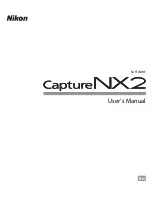
Authentication and Authorization Enforcement
Managing Security
8-9
User Authentication and Authorization
Basic authentication prompts for a user name and password before serving an
HTTP request. When a browser requests a page from a protected area, Oracle HTTP
Server responds with an unauthorized message (status code 401) containing a
WWW-Authenticate:
header and the name of the realm configured by the
configuration directive,
AuthName
. When the browser receives this response, it
prompts for a user name and password. After the user enters a user name and
password combination, the browser sends this information back to the server in an
Authorization header. In the authorization header message, the user name and
password are encoded as a base 64 encoded string.
User authorization involves checking the authenticated user against an access
control list that is associated with a specific server resource such as a file or
directory. To configure user authorization, place the
require
directive in the
httpd.conf
file, usually within a virtual host container. User authorization is
commonly used in combination with user authentication. After the server has
authenticated a user’s user name and password, then the server compares the user
to an access control list associated with the requested server resource. If Oracle
HTTP Server finds the user or the user’s group on the list, then the resource is made
available to that user.
Using mod_auth to Authenticate Users
User authentication is based on user names and passwords that are checked against
a list of known users and passwords. These user name and password pairs may be
stored in a variety of forms, such as a text file, database, or directory service. Then
configuration directives are used in
httpd.conf
to configure this type of user
authentication on the server.
mod_auth
uses the
AuthUserFile
directive to set up
basic authentication. It supports only files.
Any authentication scheme that you devise requires that you use a combination of
the configuration directives listed in
Table 8–1
.
Table 8–1
Directives Descriptions
Directive Name
Description
AuthName
Defines the name of the realm in which the user names and
passwords are valid. Use quotation marks if the name includes
spaces.
AuthType
Specifies the authentication type. Most authentication modules use
basic authentication, which transmits user names and passwords in
clear text. This is not recommended.
Summary of Contents for HTTP Server
Page 1: ...Oracle HTTP Server Administrator s Guide 10g Release 1 10 1 Part No B12255 01 December 2003 ...
Page 12: ...xii ...
Page 22: ...xxii ...
Page 38: ...About htaccess Files 2 8 Oracle HTTP Server Administrator s Guide ...
Page 52: ...Getting Information about Processes 4 8 Oracle HTTP Server Administrator s Guide ...
Page 60: ...Configuring Reverse Proxies and Load Balancers 5 8 Oracle HTTP Server Administrator s Guide ...
Page 70: ...Specifying Log Files 6 10 Oracle HTTP Server Administrator s Guide ...
Page 170: ...9 6 Oracle HTTP Server Administrator s Guide ...
Page 178: ...opmn xml A 8 Oracle HTTP Server Administrator s Guide ...
Page 212: ...Glossary 10 ...
Page 224: ...Index 12 ...
















































